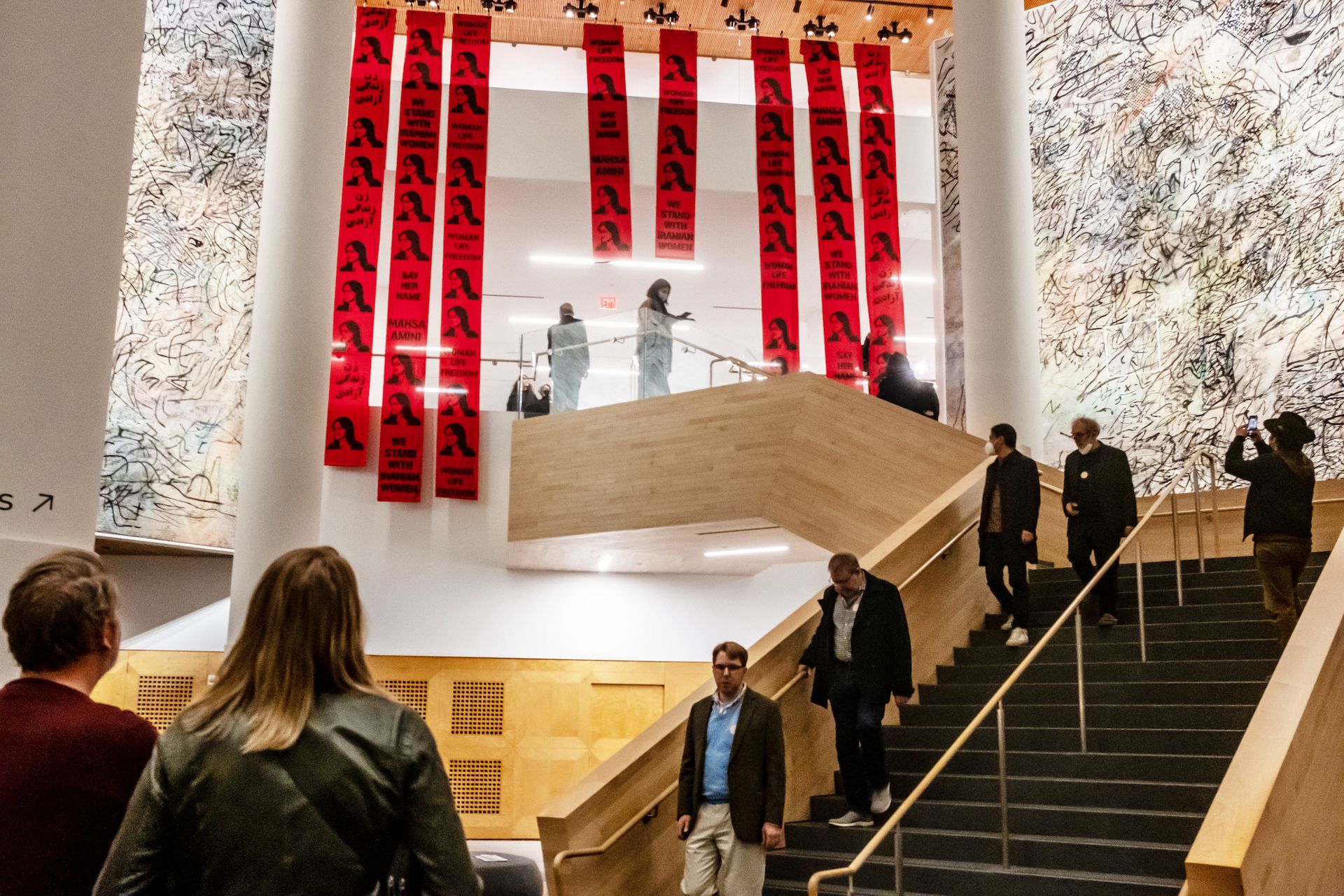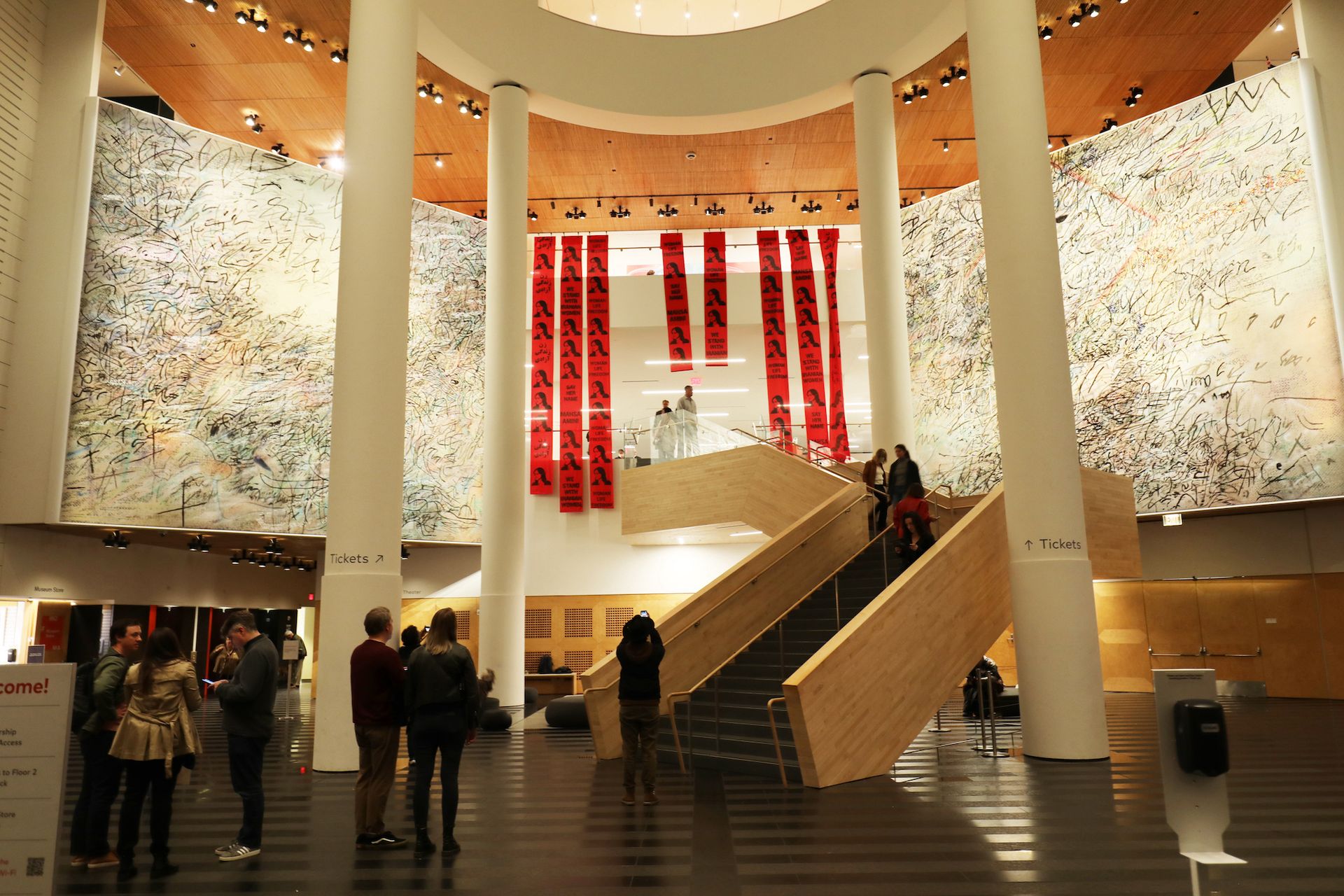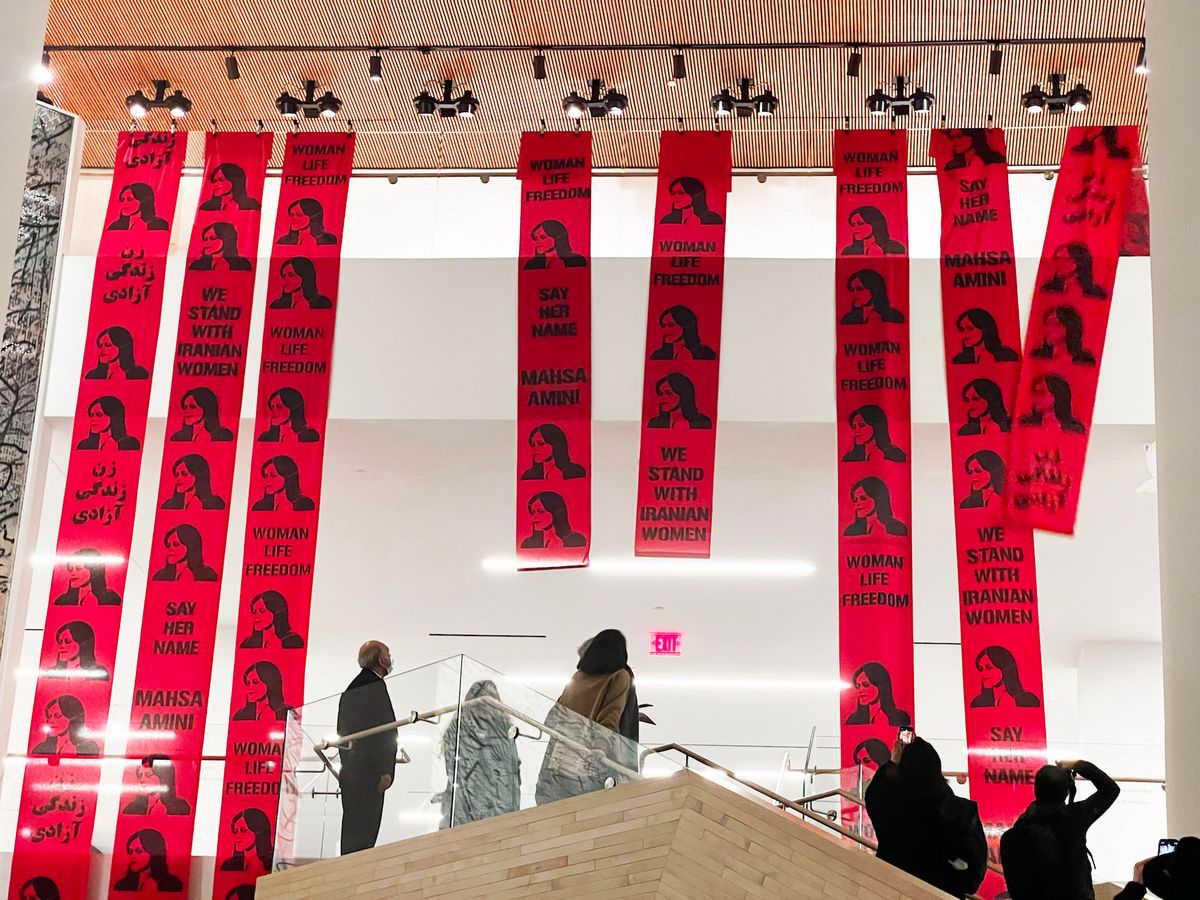Protestors unfurled red banners at the San Francisco Museum of Modern Art (SFMOMA) on 17 November, the vivid signs covered with phrases such as “Woman life freedom” and “We stand with Iranian women”. Organised by an anonymous group of Iranian artists and designers, the action occurred in the ninth week of demonstrations across Iran prompted by the death of Mahsa Amini while the 22-year-old Kurdish woman was in the custody of Iran’s morality police after being accused of improperly wearing her hijab. Amini’s portrait, which has become a symbol in the wave of uprisings for women’s rights in Iran, and the words “Say her name” also covered the eight banners that hung in the SFMOMA atrium from the museum’s third floor.
The group’s intention was to “remind our audience about what is going on in Iran and question the indifference of the non-MENA (Middle East North Africa) art communities towards these events”, says a representative of the group, who requested anonymity given the guerrilla nature of these actions. “We firmly believe that the best thing anyone outside Iran can do is to be the voice of the people of Iran. The fight of those taking the brutality of the Islamic regime for seeking freedom deserve to be seen and heard as much as any other nation in the world.”

Banners featuring images and slogans in support of the Iranian uprisings are unfurled at SFMOMA
The protest follows a similar banner drop at the Guggenheim Museum on 22 October organised by the New York collective Anonymous Artists for Iran, and a sit-in at the Los Angeles County Museum of Art (Lacma) on 9 November, during which artists handcuffed themselves to Chris Burden’s Urban Light (2008) installation to raise awareness of the ongoing uprising and repressive forces of the Islamic Republic.
The representative of the San Francisco group says that artists came together as the uprisings in Iran first began, to consider the question of how to use art to “relay the message of our people who are fighting on the streets of Iran, from outside of the country”. When they saw the Guggenheim demonstration, they knew they wanted to replicate it in San Francisco, and chose SFMOMA because of the museum’s audience and architecture.
“The power of this plan was in staying loyal to the original form and visuals of the first event,” the artist says. “We prepared the work independently: we made the curtains from scratch, formed a group of people who were willing to participate and performed it in two weeks.”

Banners featuring images and slogans in support of the Iranian uprisings are unfurled at SFMOMA
Museums have proven to be highly effective, visible stages for such guerilla tactics. But at least one institutionally sanctioned act of solidarity with the protests in Iran has led to backlash. In late October, the Neue Nationalgalerie in Berlin hung a banner on its facade featuring a self-portrait by Shirin Neshat that director Klaus Biesenbach said “draws attention to the current protests in Iran for democracy and women's rights”. The black-and-white image of Neshat in a hijab, from her series Women of Allah (1993-97) was paired with the slogan “Woman life freedom” and drew backlash from some Iranian artists who see Neshat’s imagery as orientalist and retrograde. Other critics have denounced the banner, which was coordinated alongside a peace vigil and performances, as capitalising on the struggles of the uprising.
According to the representative, the anonymous group in San Francisco chose an art museum simply because it is part of their domain. But they urged for everyone, not just institutions, to play a role in demanding change. “We are asking for people to care, ask questions, be curious and share the stories,” they say.


